Sophie Violet Gilmore – 19 May, 2015
The artist's conferring of subjectivity onto an embalmed dog through the wording of a sign is uncomfortably hilarious, resulting in an ambiguous work which is either highly emotional, or perhaps not emotional at all. Rather than aspiring towards a sincere engagement, the artwork may be understood as calculatedly provoking a knee-jerk reaction at its own distasteful, self-entertaining humour.
Dunedin
Various Britsh artists
Private Utopia: Contemporary Art from the British Council Collection
28 March - 9 August 2015
It must be pretty unusual to leave an art exhibition in the mood to do something outrageous, creatively recharged with a shade of delinquency, but this feeling may ensnare anyone who visits the infectious Private Utopia.
Private Utopia (a catchy yet insignificant title in the fashion of redundantly-named blockbuster movies) is a major exhibition comprising significant works from the British Council Collection, a body of contemporary British art assembled for the purpose of display overseas. Originally shown in Japan, the exhibition features a fascinating range of works by more than thirty artists, some of whom are well established and others who are steadily gathering recognition. They were chosen in consultation with curators from important galleries throughout Japan, including the Tokyo Station Gallery and Okayama Prefectural Museum of Art. The Dunedin Public Art Gallery is the only venue in Australasia fortunate enough to be displaying this captivating exhibition, worthy of repeated and lengthy visits.
In spite of its inclusion of a wide range of different media, including painting, sculpture, installation, photography and video art, Private Utopia achieves a laudable sense of cohesion, with each artwork contributing to an overarching bizarre-yet-appealing mood. Artists prominent since the 90s - including Sarah Lucas (a series of alienating photographic portraits, showing the artist in confronting situations of isolation and banality, such as Self Portrait with Eggs, 1996) and Tracey Emin (a characteristically gross multi-media mural entitled Something’s Wrong, featuring a woman with coins streaming from her genitals) - are represented alongside a newer generation, such as Martin Boyce and Elizabeth Price, giving the show a sense of timeliness.
Private Utopia, which occupies the entire first floor of the gallery, is thematically arranged according to three rather lofty themes: “Tale/Fable”, “Myself/Yourself” and “Landscapes/Mindscapes”. This curatorial division makes for interesting interactions between works, and these themes do play into individual artworks at some level or another. Ideologically the works may be related to a social and political context of Thatcher-era discontent - complicated by the fact that the artists traverse different eras. However it seems to me that the artists’ intellectual engagement is peripheral to their more interesting achievement: they all exude a unique sensibility which mingles irreverent humour and chilling creepiness. The exhibition has a unique affective power which is often as remarkable in force as it is inexplicable.
The exhibition’s essence of baleful humour is forcefully condensed in Jake and Dinos Champman’s etching series Giant Colouring Book, where the whimsy of children’s book illustrations, such as clowns and teddy bears, is given a nightmarish twist through minimal additions of smeared ink. Recalling the juvenile defacement of images, “connect the dots” books and Surrealist automatist experiments, the clever suggestiveness achieved by the Chapman Brothers in these works is simultaneously disgusting and endearing.
Private Utopia also includes several notable video art works. Jeremy Deller’s The Life and Times Of Adrian Street, presents a hilariously eccentric narrative of a super-camp pro-wrestler, displayed against a garish painted backdrop, in the style of a side-show attraction; the clever contribution of a Japanese artist. This carries the exhibition’s current of irksomeness because of its seeming implausibility. This sentiment is echoed in Marcus Coates’ filmed record of his performance dressed as a blue-legged Booby on the Galapagos Islands.
Elizabeth Price’s 2012 Turner Prize winning The Woolworths Choir of 1979 is another highlight. An incredibly chilling viewing experience, the piece blends dissonant images of church architecture, the gestural movements of pop singers, and a devastating fire at a Woolworth store in a perplexing and ruminative arrangement. The cumulative sense of inexplicable connectedness between the images in the video has an eerily mythic quality which sets the body on edge.
Particularly thrilling is the inclusion of several lithographs by Peter Doig. A work such as the eerily solitary Blotter, a lone figure standing in a lake, exudes an astounding sense of immediacy and ephemerality. Doig’s rendering of water, when rippling or still, is astounding within the limitations of the lithographic medium. Accompanying the atmospheric stridency of Doig’s work is a kind of knowingness, for this series of prints was created as compact, simplified reproductions of his large-scale paintings, a kind of retrospective-draft which ironically reverses the typical artists’ process.
Next to Ryan Gander’s children’s-doodle-like manipulation of a taxidermied bird, The Fourth Baron Egerton’s 16 Plumed Bird of Paradise, hangs Martin Boyce‘s obtusely titled Mobile: Being with You is like the New Past, a simply constructed and effective sculpture, where the dismantled components of a chair - such as would be seen in a work-place meeting room - are suspended in sporadic movement. Whether the work is seen as a playful experiment delighting in its own absurdity, or some sinister indictment of capitalist hypnosis, is open to debate.
The startling affective force demonstrated sporadically in the exhibition is perhaps most potent in David Shrigley‘s piece I’m Dead, to which I responded with raucous, uncontrollable laughter: a reaction I’m sure is not uncommon. I’m Dead is a taxidermied Jack Russell holding a sign redundantly announcing his own demise. The artist’s conferring of subjectivity onto an embalmed dog through the wording of a sign is uncomfortably hilarious, resulting in an ambiguous work which is either highly emotional, or perhaps not emotional at all. Rather than aspiring towards a sincere engagement, the artwork may be understood as calculatedly provoking a knee-jerk reaction at its own distasteful, self-entertaining humour. It may be that this intention can be read into many, if not most, of the works in the exhibition.
Showing an incredible range of works of exceptional quality, by turns enchanting, perplexing, exciting or frightening, Private Utopia is a rapturously enjoyable exhibition, best enjoyed, in British style, with a pint afterwards.
Sophie Violet Gilmore
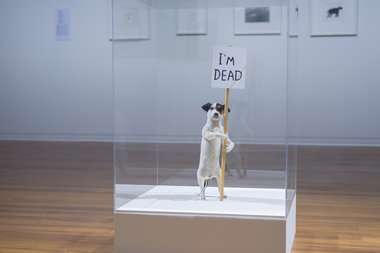
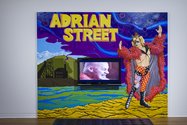

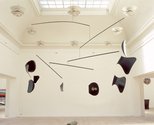

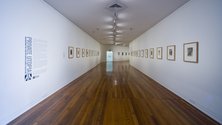
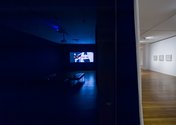
 Two Rooms presents a program of residencies and projects
Two Rooms presents a program of residencies and projects Advertising in this column
Advertising in this column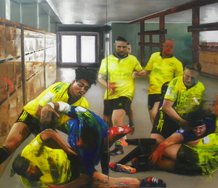
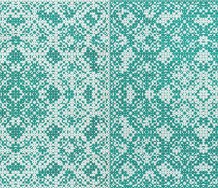
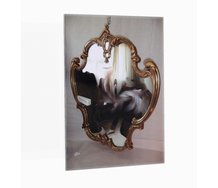
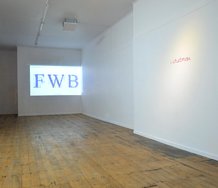
This Discussion has 0 comments.
Comment
Participate
Register to Participate.
Sign in
Sign in to an existing account.